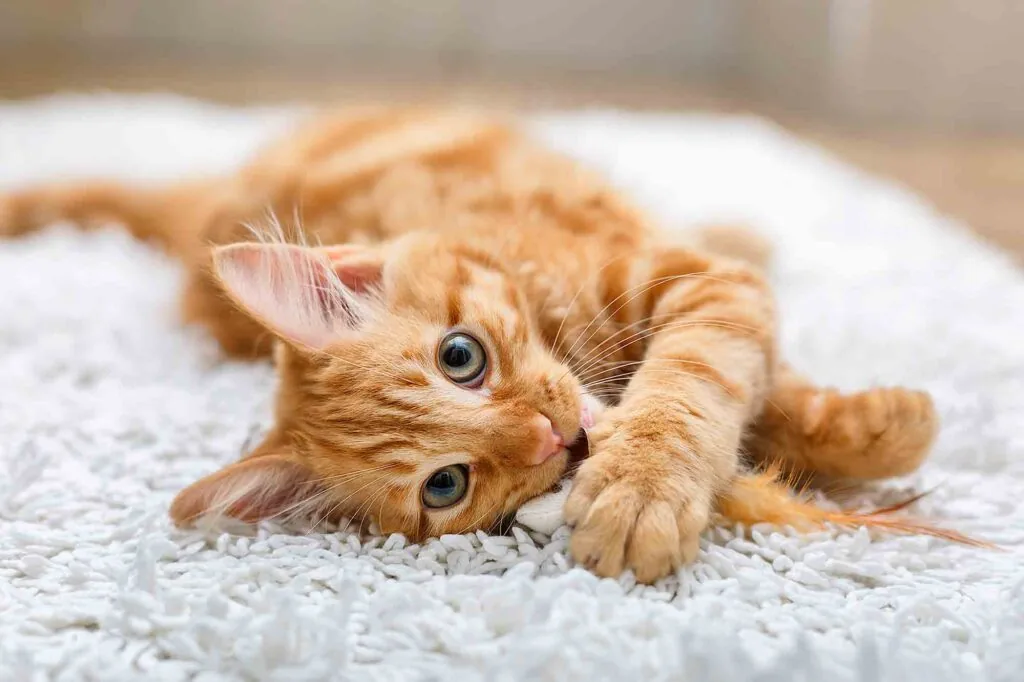 Watching your cat in their natural habitat can be amazing. Even the most pampered housecat will spring into stealthy action when an errant mouse or a dastardly dust bunny comes into sight. That’s because the cats we welcome into our homes aren’t all that different from a lion or other big cat. Domestication does have some influence, but it’s truly incredible how much our kitty companions have retained from their untamed ancestors. Join Schertz Animal Hospital as we explore the similarities and differences between the domestic cat and its wild relatives.
Watching your cat in their natural habitat can be amazing. Even the most pampered housecat will spring into stealthy action when an errant mouse or a dastardly dust bunny comes into sight. That’s because the cats we welcome into our homes aren’t all that different from a lion or other big cat. Domestication does have some influence, but it’s truly incredible how much our kitty companions have retained from their untamed ancestors. Join Schertz Animal Hospital as we explore the similarities and differences between the domestic cat and its wild relatives.
More Similar Than Not
If you take a look at the genetic makeup of a domestic housecat versus, say, a leopard, you’d be hard pressed to find many differences. The DNA of our housepets has remained virtually unchanged from their relatives. Similarities include:
- Retractable claws
- Marking territory by scratching
- Rubbing pheromones on objects using the legs and sides of the face
- Smelling with the mouth open (using the vomeronasal organ)
- Taking long naps in between intense bursts of activity
- Being obligate carnivores
- Excellent vision in low light
- Ability to digest fatty proteins in their prey
The Domestic Cat
Research shows that cats actually lived alongside humans for thousands of years before they became domesticated. Around 8,000 years ago when we began to farm, it seems cats were attracted to us as the rodent population began to discover our crop stores. As a result, humans were deemed worthy of living with rather than the other way around.
This helps explain why so much about our domestic cats remain similar to their wild counterparts. Very little has changed in their DNA during the domestication process. Unlike dogs, who were bred to fulfill certain purposes, cats have never been geared to fill any role. We’ve simply accepted them as the perfect pets they are.
Perhaps the main difference between the domestic cat and a wild cat is the unique tabby coat pattern. This coloring is a product of domestication, not appearing until well into the domestication process in the Middle Ages and becoming common in the 18th century.
Domestic cats also show genetic mutations that downplay aggressive behaviors and increase the ability to learn based on fear and reward (making feats like toilet training possible). These are changes that likely helped cats live in harmony with our ancient ancestors.
So the next time you joke that your cat is channeling their inner tiger, try to remember they probably are! Knowing that domestic cats have a lot in common with wildcats helps us better care for them, providing an ideal environment in which to grow and thrive. Schertz Animal Hospital is happy to be your partner in caring for your little lion.
Recent Posts
About Us
We know that choosing the right veterinarian for your pet (and you) can be a challenge. Yet, with our stress-free handling, our long-term, experienced staff, and a state-of-the-art facility, we make the decision an easy one!
